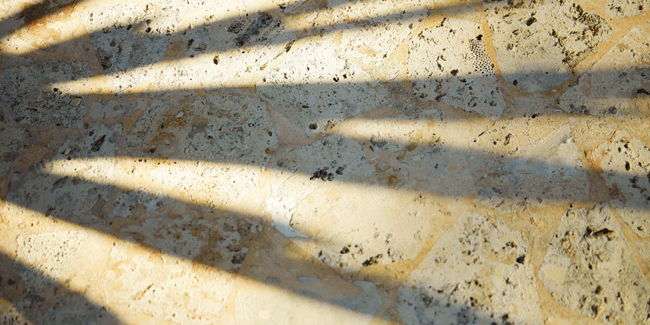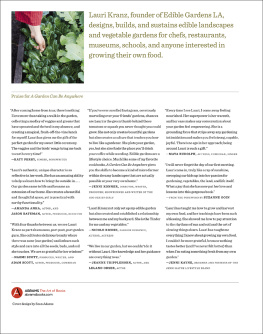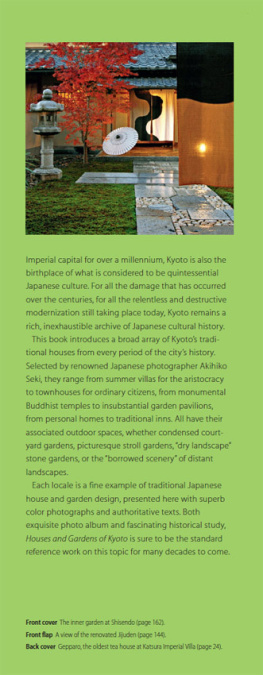



A
CONTENTS

A
HOW IT HAPPENED
O ur wonderful friend, the late, great fashion designer Oscar de la Renta, introduced my husband, John Rosselli, and me to the Dominican Republic. Oscar loved his homeland, and we came to love it, too, not only for its beauty, but also for the fabulous, kind Dominican people. After many visits to the country, we decided to build a house in Punta Cana, and we called it La Colina.
Several years later, after we had finished the house, our great friend Gil Schafer III came for a visit, bringing with him a book he had produced of the photographs he had taken over various visits. It was this book of pictures that inspired me to write about our house by the sea.
We invited Francesco Lagnesethe brilliant interior, society, and portrait photographerto come and stay at La Colina and use his amazing eye and talent to try to capture the soul of the house and its gardens.
My aim was to have the resulting book feel like a visit to our island retreat, and brilliant book designer Doug Turshen and his talented wife, Rochelle Udell, made that possible. Editor Shawna Mullen pored over every word I wrote to accompany the photos, helping to make sense of my story. I cannot thank them all enough. Without their vision, this book would not have come to be.
Likewise, I cannot sufficiently thank our gifted friends who graciously agreed to write about their experiences at La Colina: gardener extraordinaire Page Dickey, author Jane Garmey, novelist and biographer Roxana Robinson, architect Gil Schafer III, antiques dealer Angus Wilkie, and painter Christian Brechneff.
John and I have been blessed to have so many friends and family members enjoy our Punta Cana house over the years. Now we invite you to be our guestand stay for as long as youd like!
Bunny Williams

I
PLANNING AND BUILDING
We knew we wanted a house where we would really live outside, a house where the ocean breezes would blow through, and a house that would be a place in which we could gather our friends and family and entertain easily.

A
PLANNING AND DESIGNING
W hen it came to planning our island retreat, John and I both knew we wanted a traditional, classic house. We also knew we wanted a house where we would really live outside, a house the ocean breezes would blow through, a house that would be a place in which we could gather our friends and family and entertain easily. Fashion designer Oscar de la Renta introduced us to Cuban architect Ernesto Buch, a most modestly understated and gentle man with perhaps the best eye for classical detail I have ever met. Ernesto worked for the great architect Allan Greenberg (who told me much later that he had never encountered anyone with a better eye for proportion and scale). John and I returned to New York giddy with excitement and went through every book we had on southern houses of the Mississippi Delta, a style of architecture we both adored.
Several months later, we met with Ernesto again in Punta Cana, arriving laden with pictures of our favorite houses and a description of what we dreamed of and how we wanted to live. We all walked the property, which I came to learn was a big hill of solid coral (la colina translates to the hill), and Ernesto immediately saw where the house should be placed. We went off to dinner and talked and talked about houses we loved, the three of us in complete agreement. The next day Ernesto appeared with a sketch of what he thought could be the basic plan of the house and his vision for the exterior. With some minor changes and a reduction of size, it was exactly what we had imagined. We spent that day refining the plan.
Johns greatest desire was to have a large high-ceilinged living room (he loves big furniture), so Ernesto sketched this in. He designed for it a beautiful tray (recessed) ceiling with a perfectly proportioned cornice. I added triple-hung windowsI had always loved the ones designed by Thomas Jefferson for Monticelloas these keep air moving through the house while avoiding the banging of French doors in a breeze, something I really dislike. (Triple-hung windows are ideal for high-ceilinged rooms: You can open them all the way and walk under them easily, or just open the top sash for circulation if it is a windy day.)
The planning phase was thrilling for me; I had done such planning often with many of my clients, but never just for John and me.
Ernesto went away and put all our ideas and dreams into actual plans for building the house. He returned several days later with a sketch of the almost-perfect housewhich, with a few changes, became the final plan.


BUILDING
B uilding a house in the Dominican Republic is a truly unique experience, and one I came to love (despite many moments of chaos). There is a world of difference between the climate of New England (where we live) and that of Punta Cana. And when it comes to construction, there is also a world of difference between the methods, available building materials, and labor customs of the two countries. All these things we had to learn as we went along.
The first bit of confusion arose when we requested a cost estimate to compare to our budget for building the house. Junior Pea, our contractor (and Oscar de la Rentas domino partner and friend), had never been asked for such an estimate before, and I immediately knew that his first calculation was far too low. Junior went off to refigure the costs, and when a more accurate budget was agreed upon, work began.
I went to Punta Cana every six weeks over the year and a half it took to build the house, growing more excited each timeand learning more about how construction on an island is done. First, I saw no toolboxes; everything was done by hand. Even cement was mixed manually on flattened cardboard boxesI never once saw a mechanical cement mixer. One day I came in on a noon flight and arrived to find the site empty. Absolutely no one was around. When I finally opened the door to a guest room, I discovered all the workers taking a nap on the cool stone floor to escape the midday heat. On another trip, I noticed that a window had been installed in the wrong place. A comedy of errors ensued as I tried to explain the situation to the foreman, who looked at me in seemingly complete puzzlement. We searched high and low for the building plans, which didnt seem to be in use or anywhere in evidence. We finally found them wadded up in a garbage bag in the proposed laundry roomall of Ernestos beautiful architectural drawings! (In fact, had it not been for Ernesto and his associate Javier, I have no idea what would have been built.)
Next page

















